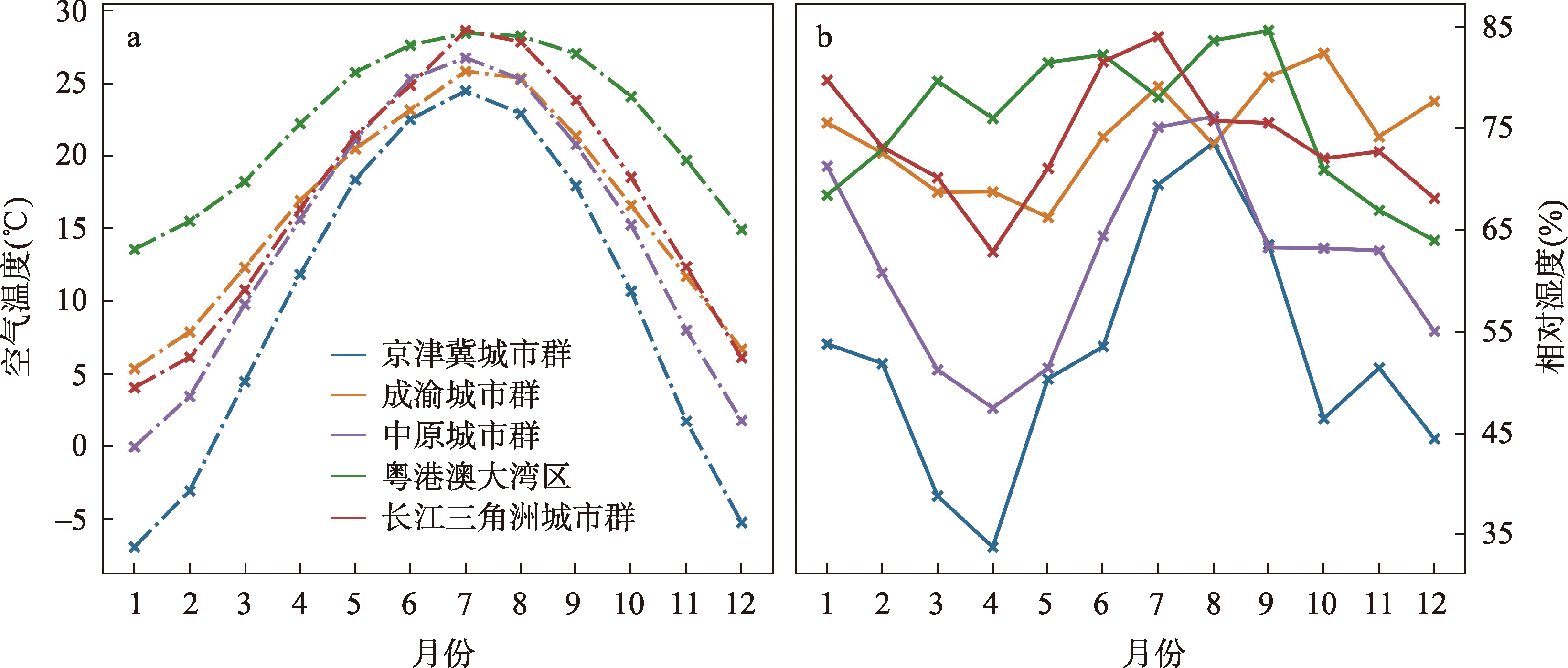

1981—2019年中国及典型区域热环境变化特征
|
陈笑(2000-), 男, 硕士生, 研究方向为城市热环境与气候暴露风险。E-mail: chen_x_yun@163.com |
收稿日期: 2023-10-25
修回日期: 2025-03-07
网络出版日期: 2025-05-23
基金资助
国家自然科学基金项目(41922007)
Evolution characteristic and typical regional analysis of national thermal environment in 1981-2019
Received date: 2023-10-25
Revised date: 2025-03-07
Online published: 2025-05-23
Supported by
National Natural Science Foundation of China(41922007)

陈笑 , 孙涛 , 孙然好 . 1981—2019年中国及典型区域热环境变化特征[J]. 地理学报, 2025 , 80(5) : 1339 -1352 . DOI: 10.11821/dlxb202505012
The outdoor thermal environment impacts human heat exchange, subsequently affecting public health, travel decisions, labor production, and landscape design. However, there are still lacking large-scale and long time-series studies. Based on the Universal Thermal Climate Index (UTCI), Sen's slope estimation, and Mann-Kendall (MK) significance test, we analyze the spatiotemporal characteristics of UTCI in China from 1981 to 2019 and reveal the heat risk of typical urban agglomerations. The results show that the widespread growth trend of UTCI exists across China, with the highest intensity occurring in spring and the second highest in summer, while the trend is not significant in most areas in autumn and winter. UTCI trend intensity was higher during daytime in spring while nighttime in summer, and overall growth tended to be more pronounced in the north than in the south. High-growth areas are predominantly located in the northwest region, plateau and basin, exceeding 0.6 °C/10a. Urban agglomerations exhibit the highest UTCI growth trend in spring, generally exceeding 0.3 °C/10a, proving the "warm spring" exists. The days of different cold stress levels generally decrease while heat stress days increase thereby subjecting residents to greater levels of heat stress. The frequency of heat stress was only 24.2% in China, and generally exceeded 60% in urban areas, which would increase residents' heat exposure risk as the thermal environment shifts from comfortable to uncomfortable. This study further helps to understand the spatiotemporal patterns of thermal environment variations and provides fundamental insights for regional management, prevention, and control in the context of climate change.

| [1] |
IPCC. Climate change 2023:Synthesis report. Contribution of working groups I, II and III to the sixth assessment report of the intergovernmental panel on climate change. Geneva, 2023: 35-115.
|
| [2] |
|
| [3] |
|
| [4] |
|
| [5] |
|
| [6] |
|
| [7] |
|
| [8] |
|
| [9] |
|
| [10] |
|
| [11] |
|
| [12] |
|
| [13] |
|
| [14] |
|
| [15] |
|
| [16] |
|
| [17] |
|
| [18] |
|
| [19] |
|
| [20] |
|
| [21] |
|
| [22] |
[雷杨娜, 张侠, 赵晓萌. 1971—2018年陕西省人体舒适度时空分布特征研究. 干旱区地理, 2020, 43(6): 1417-1425.]
|
| [23] |
[朱卫浩, 张书余, 罗斌. 近30a全国人体舒适度指数变化特征. 干旱气象, 2012, 30(2): 220-226.]
|
| [24] |
|
| [25] |
|
| [26] |
|
| [27] |
|
| [28] |
|
| [29] |
|
| [30] |
|
| [31] |
|
| [32] |
|
| [33] |
|
| [34] |
|
| [35] |
|
| [36] |
[周侗, 王佳琳. 中原城市群乡村“三生”功能分区识别及调控路径. 地理科学, 2023, 43(7): 1227-1238.]
|
| [37] |
[刘崇刚, 孙伟, 张落成. 长江三角洲碳排放与植被覆盖耦合协调时空格局及影响因素分析. 地理科学, 2023, 43(1): 142-151.]
|
| [38] |
[袁雪松, 周俊, 胡蓓蓓, 等. 基于FLUS模型粤港澳大湾区“三生空间”多情景模拟预测. 地理科学, 2023, 43(3): 564-574.]
|
| [39] |
|
| [40] |
|
| [41] |
|
| [42] |
[田浩, 刘琳, 张正勇, 等. 2001—2020年中国地表温度时空分异及归因分析. 地理学报, 2022, 77(7): 1713-1729.]
|
| [43] |
[康紫薇, 张正勇, 刘琳, 等. 基于MODIS的新疆地表温度时空变化特征分析. 地理研究, 2022, 41(4): 997-1017.]
|
| [44] |
|
| [45] |
|
| [46] |
|
| [47] |
|
| [48] |
[刘涛, 彭荣熙, 卓云霞, 等. 2000—2020年中国人口分布格局演变及影响因素. 地理学报, 2022, 77(2): 381-394.]
|
| [49] |
[王旭, 付学成, 徐文甜, 等. 2000—2020年中国城乡热舒适梯度特征及其驱动因素. 地理学报, 2024, 79(5): 1318-1336.]
|
| [50] |
|
| [51] |
|
| [52] |
|
| [53] |
|
| [54] |
|
| [55] |
|
| [56] |
|
| [57] |
|
/
| 〈 |
|
〉 |